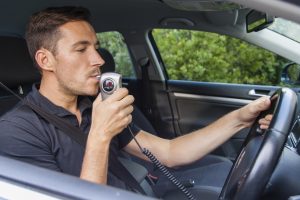In 2012, Roads and Ports Minister Duncan Gay announced that the use of alcohol interlocks were going to be mandated for repeat and high range drunk driving offenders. Beginning 1 February 2015, this mandate began applying to high range drink drivers (those caught driving with blood alcohol concentrations over 0.150) and repeat drink drivers (those who have committed two prescribed concentration of alcohol (PCA) offences within five years). In addition, drink drivers convicted of two DWI offences in five years will have to complete a driving education course and pass another driving knowledge examination before they are issued a valid driver’s licence.
What is an Interlock Device?
Vehicle interlocks are electronic breath testing devices connected to the ignition system of a car, heavy vehicle or motorcycle. Before the driver can start their vehicle, they must breath into the interlock device so that the device can analyse their breath for the presence of alcohol. Drivers must also submit to random breath tests while they are driving as determined by the device.
Analysis of a drink driver’s breath is implemented by an ethanol-specific sensor embedded in the interlock device. This specialised, electrochemical fuel cell generates an electrical current as alcohol molecules detected in the driver’s breath undergo oxidation reaction aided by a platinum (catalytic electrode) surface. If an electrical current is generated, the interlock device then converts the current to an alcohol equivalent.
In addition to recording test results, the interlock device also records a picture of the drink driver blowing into the device. Any attempt by the driver to tamper or modify the device is also recorded to provide evidence that the driver is breaching conditions of the interlock licence.
In NSW, Australia, anyone participating in the mandatory interlock must have a zero BAC (blood alcohol concentration) before they can turn on their vehicle.
Facts About the Mandatory Alcohol Interlock Program in NSW, Australia
- Low and novice range repeat drink driving offenders are subject to interlock periods of up to 12 months.
- High-range, serious and repeat offenders are subject to interlock periods of 48 months.
- Section 211 of the Mandatory Alcohol Interlock Act states that anyone failing to begin or finish their mandated interlock period will be disqualified from driving legally and from participating in the program for at least five years, beginning at the time they were convicted.
- Drink driving offenders must pay for the interlock program, including cost of installing the device, monthly rental fees, maintenance/calibration and removal of the device. Standard services will cost offenders around $2,200 a year.
What the NSW Government Aims to Accomplish with the Mandatory Alcohol Interlock Program
- The MAI Act is expected to significantly reduce injuries and deaths associated with drink driving. In 2013, drink driving accounted for 987 injuries and 50 deaths in NSW, Australia.
- Between 2008 and 2012, drink driving crashes cost the NSW over $600 million annually. The government hopes to decrease this expenditure by implementing the MAI Act.
- Research shows that repeatedly convicted drink drivers are four times more likely to be the primary factor in fatal crashes than average drivers. The MAI Act was developed especially to help repeat offenders learn the importance of separating drinking and driving to reduce the risk of causing accidents.
- Further investigation into the efficacy of interlock devices has revealed that medical consultations, counselling and information monitoring promotes behavioural changes that stabilize and eventually become long term in drink driving offenders.
Success of Interlock Device Programs in the U.S.
- States implementing ignition interlock devices have been extremely successful, reducing drink driving fatalities by nearly 50 percent (Mothers Against Drunk Drivers (MADD), 2013).
- Ignition interlock laws have been found to reduce repeat drink driving offences significantly (http://www.dvrpc.org/PennsylvaniaSafetySymposium/pdf/Breakout_A_Anne_McCartt.pdf).
- The U.S Centers for Disease Control reports that “there is a nearly 70 percent reduction of drink driving repeat offenses if ignition interlock devices are installed and used correctly”.
- In a report issued by the NIAAA in 2008, interlock devices were found to be “substantially more effective” in deterring drink driving recidivism than licence suspension.
- Between 2006 and 2011, the U.S. National Highway Traffic Safety Administration reports that states mandating issuance of interlock devices drink drivers reduced DUI deaths by 30 percent.
Finally, a report detailing the cost-benefits of installing interlock devices in all newly registered cars in Australia concluded that the ease of use and affordability associated with equipping vehicles with interlock devices would be an effective countermeasure for significantly curbing the NSW’s drink driving epidemic.







